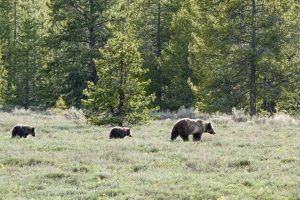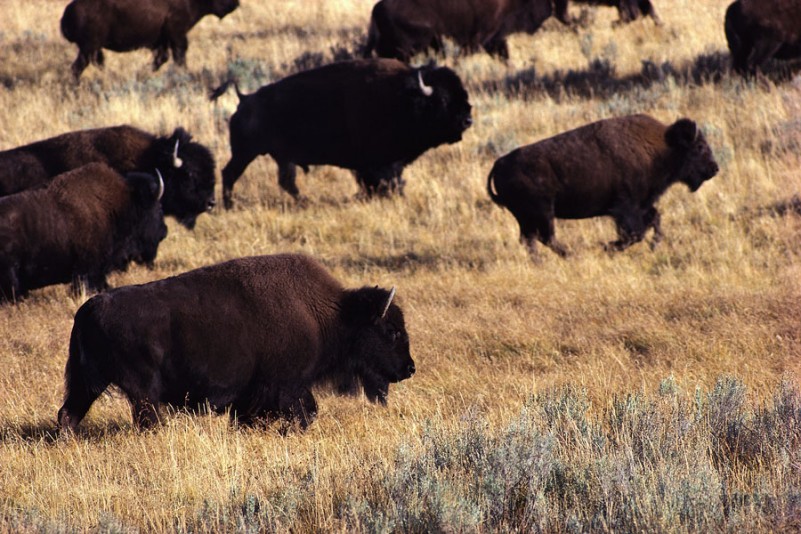Grand Teton Asks Visitors to Be “Beary” Aware of Bears & Cubs
Written by Andrew-Rossi on April 19, 2022
Grizzly bears with cubs have begun emerging from hibernation in the Greater Yellowstone Ecosystem, which means residents need to secure their food, feed, and trash.
As bears become active this spring, BearWise Jackson Hole and Grand Teton National Park remind residents and visitors to secure attractants of any kind and be bear-aware.
Living and recreating in the Greater Yellowstone Ecosystem requires awareness and actions to keep both bears and humans safe. As the grizzly bear population expands within the Greater Yellowstone Ecosystem, bears continue to disperse across their historical range and into more populated areas.
All of Teton County is now in occupied grizzly bear habitat.
Properly storing all attractants to ensure a bear does not obtain a food reward is crucial to keeping bears wild. Once a bear becomes conditioned to human foods, risks to the bear and humans increase, and management options become limited.
“Whether you have lived in Teton County for decades or are visiting the area for a day, please do your part to help protect bears,” a Grand Teton National Park press release states.
This information will be particularly relevant for one grizzly in particular – Grizzly 399.
Last year, Grizzly 399 made international news by successfully raising four cubs. The bear and her cubs have emerged and are foraging for food.
Unfortunately, the wanderings of Grizzly 399 have taken the bear to occupied areas, where she could feed her cubs with human attractants. While wildlife officials may use some leniency, bears found eating human attractants are either relocated or removed from the population.
Wyoming Game and Fish relocated 45 different grizzlies in 2021.
According to the department’s official report, seven bears – 14% of the total – were relocated to Teton County. Many others were captured in Teton County and relocated elsewhere in the state.
Wyoming Game and Fish ask all residents and visitors to immediately report any conflict activities in local communities to the bear management professionals. A quick report ensures the department can respond swiftly to reduce conflict potential between bears and people.





